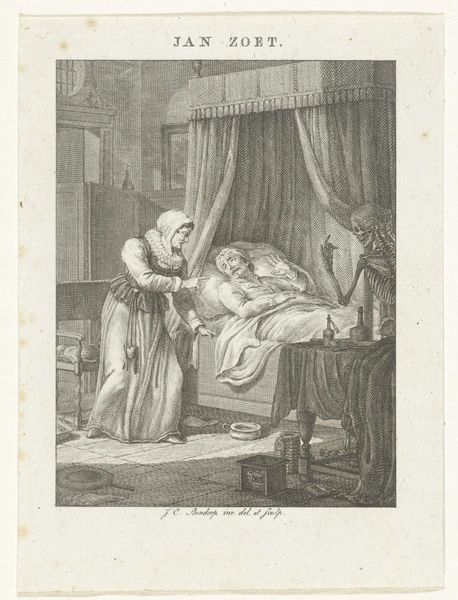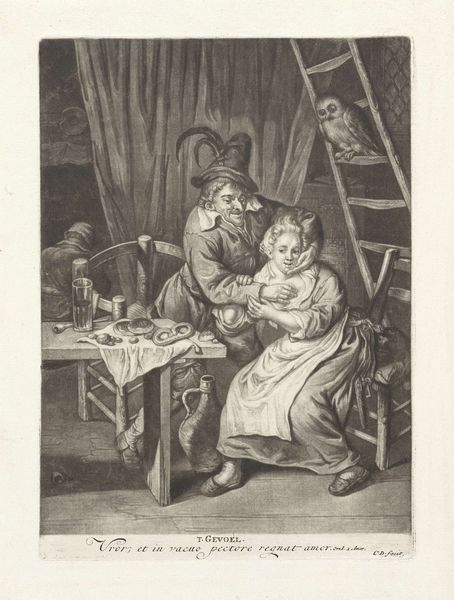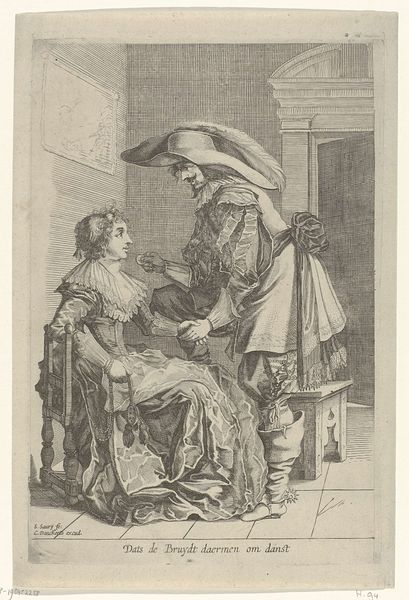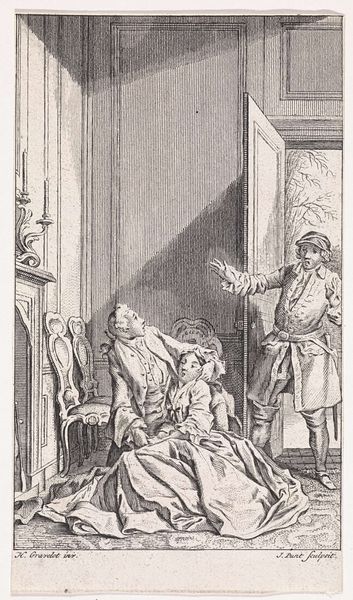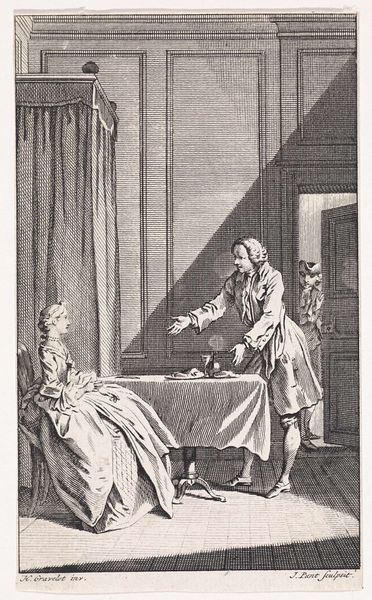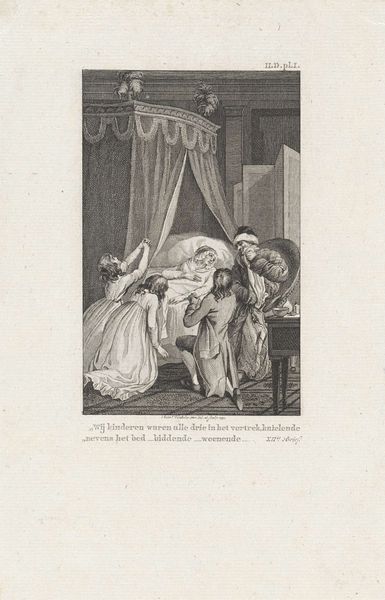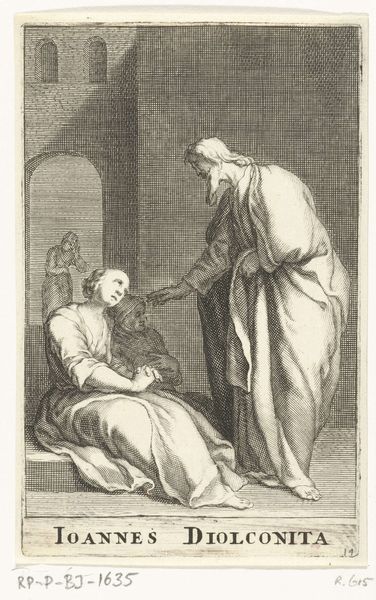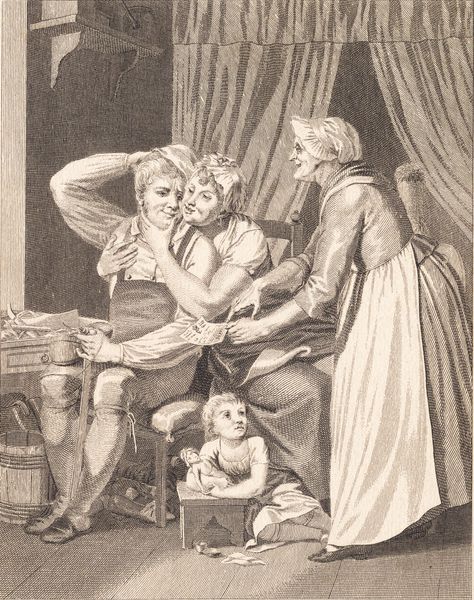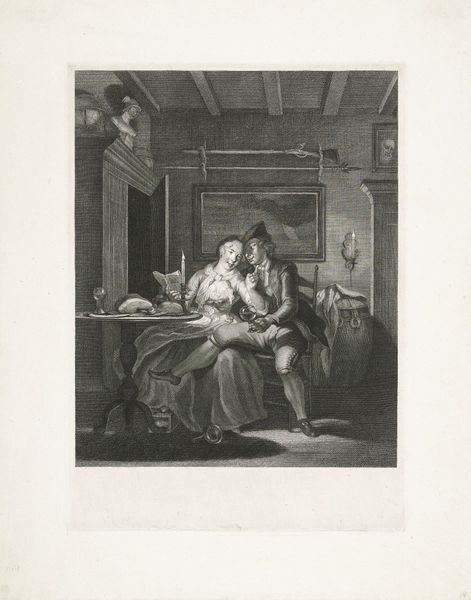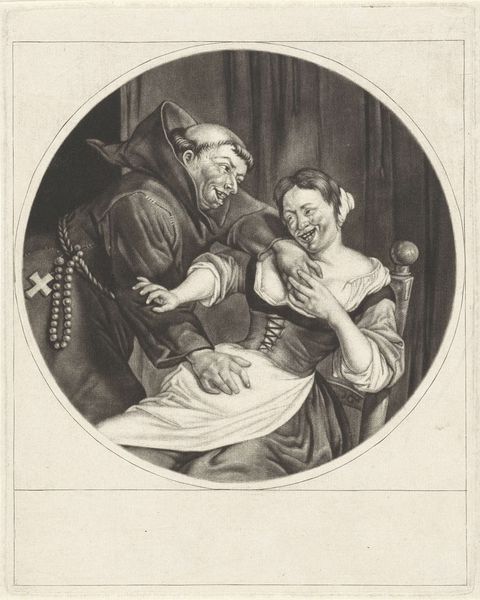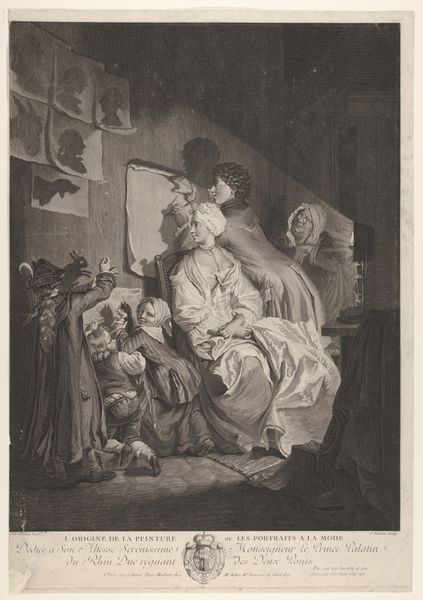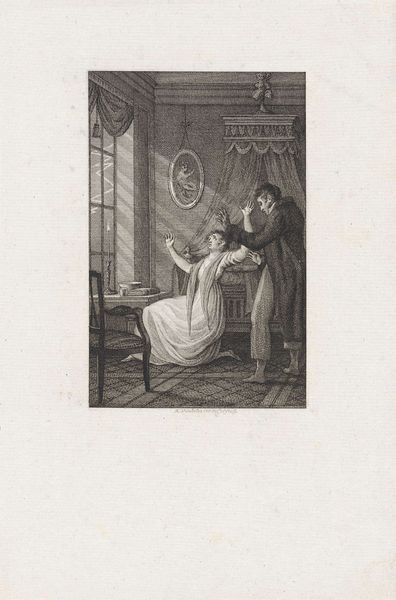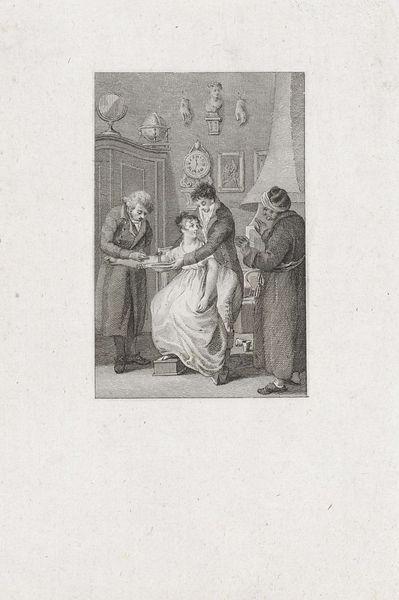
print, etching, engraving
#
narrative-art
#
baroque
# print
#
etching
#
portrait reference
#
portrait drawing
#
genre-painting
#
nude
#
engraving
#
erotic-art
Dimensions: height 298 mm, width 219 mm
Copyright: Rijks Museum: Open Domain
Editor: This is Jan van der Bruggen's print "Wellust," created sometime between 1681 and 1689, utilizing etching and engraving techniques. It presents a rather unsettling scene. What do you see in this piece beyond the immediate narrative? Curator: I see a potent commentary on power dynamics and social commentary typical of Baroque art, particularly when we consider the term "Wellust" translates to "Lust." This is not simply a depiction of desire but an interrogation of how desire intertwines with social hierarchies and moral judgments of the period. The contrast between the older man, presumably of higher status indicated by his clothing, and the younger woman hints at an imbalance of power. What assumptions are built into this dynamic? Editor: That's an important point. The age and clothing definitely establish a social difference between the figures that seems central to the whole piece. Curator: Exactly. And if we think about the context of the late 17th century, what does the representation of female virtue and its potential compromise tell us about societal anxieties concerning women’s roles and agency? The visual language employed--her pose, her partially revealed state, the objects in the background--these were loaded signifiers that spoke volumes to contemporary audiences. Do you think the artist takes a position here, or simply offers a reflection? Editor: It's hard to tell for certain. The woman seems caught in an awkward space, suggesting at least some kind of imposed behavior or expectation. Curator: And that ambiguity, I believe, is precisely where the work's power lies. It compels us to consider the complexities inherent in human relationships, social expectations, and the ever-shifting terrain of morality, even today. The work forces us to consider not just what we see, but how that image is framed by broader cultural forces that continue to resonate. Editor: That's given me a completely new perspective on the piece. Thank you. Curator: Indeed! This exercise shows just how important historical awareness and a careful intersectional analysis are when studying art.
Comments
No comments
Be the first to comment and join the conversation on the ultimate creative platform.
